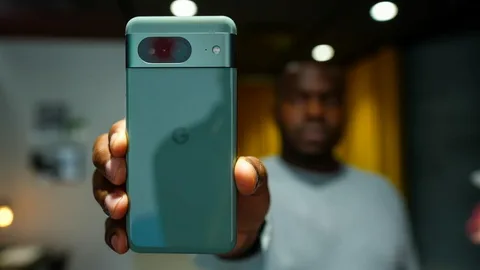Deconstructing Style: Why German Designers Are Drawn to Comme des Garçons’ Philosophy
In the ever-evolving landscape of global fashion, Comme des Garçons stands as a symbol of fearless creativity and conceptual depth. Founded by Rei Kawakubo in Tokyo in 1969, the brand has consistently challenged the boundaries between fashion, art, and philosophy. In recent years, German designers and creative thinkers have increasingly turned their attention to Kawakubo’s avant-garde approach—embracing her radical deconstruction of aesthetics, identity, and the meaning of beauty itself. This cultural exchange between Japan and Germany reveals how Comme des Garçons’ ethos resonates deeply with the intellectual and minimalist tendencies of German design.
The Intersection of Philosophy and Fashion
At the heart of Comme des Garçons’ philosophy lies the idea that fashion is not merely about adornment—it is a form of intellectual expression. Kawakubo’s designs challenge what is traditionally considered beautiful or wearable. The brand’s collections often feature asymmetry, distortion, and raw construction, rejecting the polished perfection of conventional couture. This conceptual approach mirrors the philosophical rigor of German design, which historically values function, clarity, and meaning.
German designers have long embraced the idea that form follows function—a principle rooted in the Bauhaus movement and the works of figures like Walter Gropius and Ludwig Mies van der Rohe. Kawakubo’s rejection of commercial trends aligns with this spirit of integrity and purpose. By stripping fashion down to its intellectual core, she creates garments that act as manifestos of thought, not mere commodities. This fusion of Japanese abstraction and German rationalism creates a dialogue that continues to inspire a new generation of European creatives.
Deconstruction as a Creative Language
The word “deconstruction” carries significant weight in both philosophy and design. Influenced by the writings of Jacques Derrida, Kawakubo’s approach involves dissecting traditional forms and reassembling them into something entirely new. Her work is a critique of fashion’s obsession with surface and conformity—a rebellion against the expectations of gender, beauty, and structure.
For German designers, this method resonates with their own quest for authenticity and originality. Deconstruction allows them to question the hierarchy of design, to explore imperfection as an aesthetic, and to see failure as part of the creative process. In Berlin, for example, a city celebrated for its raw, unpolished energy, Comme des Garçons’ influence is especially palpable. Independent labels such as Ottolinger, GmbH, and Lala Berlin reflect this ethos in their experimental tailoring and conceptual storytelling.
Through deconstruction, Comme des Garçons invites its audience to participate intellectually—to interpret rather than consume. This interactive relationship between creator and viewer is what many German designers find compelling. It transforms fashion into a form of visual philosophy, a shared space where meaning is constantly negotiated and redefined.
Cultural Parallels: From Tokyo to Berlin
Despite their geographical and cultural differences, Tokyo and Berlin share a profound artistic kinship. Both cities thrive on experimentation, individuality, and counterculture. Like Japan, Germany has a long history of challenging mainstream aesthetics, using fashion and art as tools of cultural critique. It’s no surprise that Comme des Garçons’ Berlin flagship store has become a hub for creative exchange, attracting designers, artists, and intellectuals alike.
German fashion schools, including ESMOD Berlin and Hochschule für Gestaltung Offenbach, now encourage students to study Kawakubo’s collections as case studies in conceptual design. Her philosophy of creating “something that didn’t exist before” aligns perfectly with Germany’s own innovation-driven design culture. It encourages emerging designers to move beyond market trends and embrace a visionary, thought-based practice.
Moreover, the influence of Comme des Garçons can be seen beyond fashion—in architecture, graphic design, and even product development across Germany. The brand’s disciplined minimalism, paired with its subversive complexity, resonates with the country’s obsession with precision and purpose.
The Power of Imperfection
One of the most radical aspects of Comme des Garçons’ aesthetic is its celebration of imperfection. In a world dominated by polished visuals and digital perfection, Kawakubo’s deliberately uneven cuts, frayed edges, and irregular silhouettes are a bold statement. They remind us that beauty lies in vulnerability and authenticity. This concept is deeply appealing to German designers, who value craftsmanship but are increasingly drawn to emotional imperfection as a symbol of truth.
In many ways, this approach mirrors the philosophy of Wabi-Sabi, the Japanese appreciation of transience and imperfection. German creatives interpret this through their own cultural lens, combining it with the post-war ethos of rebuilding and redefining identity. The result is a hybrid aesthetic—raw yet refined, abstract yet intentional—that captures the tension between chaos and control.
Comme des Garçons as a Catalyst for German Minimalism
While the brand is often associated with complexity, Comme des Garçons has also shaped a new wave of German minimalism. Unlike the sterile minimalism of the past, this new iteration embraces irregularity and depth. It’s about minimal form, maximal meaning. Designers inspired by Kawakubo strive to create garments that feel both intellectual and emotional, merging reduction with resonance.
In cities like Munich, Hamburg, and Düsseldorf, boutiques showcasing avant-garde labels have seen growing demand for brands that echo this philosophy—labels such as Yohji Yamamoto, Rick Owens, and Ann Demeulemeester, all of whom share Comme des Garçons’ DNA of radical minimalism. German consumers, known for their discerning taste and appreciation of craftsmanship, are now embracing fashion as a form of self-expression and intellectual engagement rather than pure luxury.
The Future of Conceptual Fashion in Germany
As the global fashion industry becomes increasingly saturated, the philosophical approach pioneered by Rei Kawakubo offers a refreshing antidote. Her refusal to conform, her embrace of ambiguity, and her deep understanding of human emotion continue to influence the next generation of German designers. In a country that values precision and rationality, Comme des Garçons introduces the poetry of paradox—a reminder that true innovation often arises from contradiction.
The rise of sustainable and conceptual fashion in Germany further reflects this influence. Designers are now prioritizing process over product, crafting narratives that explore identity, gender, and culture. Kawakubo’s enduring legacy lies in this ability to provoke thought—to make us question not only what we wear, but why we wear it.
Conclusion
The relationship between German design and Comme des Garçons’ philosophy is a dialogue of ideas, not aesthetics. It’s about curiosity, rebellion, and the courage to dismantle Comme Des Garcons T-Shirts what already exists in order to build something new. Rei Kawakubo’s vision transcends borders, inspiring a generation of German creatives to approach fashion not as decoration, but as a language of ideas. Through this shared pursuit of meaning, both cultures reaffirm their belief that design—at its highest level—is an act of philosophy.




